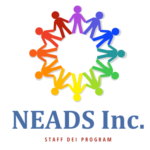Flintstones – Hearing Loss
A nice example of what different hearing loss “sounds” like using the Flintstones.
Read MoreFathering Autism – a Vlog
Fathering Autism has a really unique and honest perspective on life with an autistic daughter/family member. The channel is run by dad, Asa, and is filmed in a vlog style of their day-to-day. A lot of it focuses on his daughter, Abby, who is autistic and non-verbal. We’ve selected a few videos below that seemed…
Read MoreDisability and inclusion in the workplace
Fostering an equitable work environment starts with raising awareness, and so our objective is to highlight visible and invisible disability, barriers that individuals in the workplace face, focusing on capability and ultimately shift how we discuss disability.
Read MoreHow a wheelchair challenge mobilized a high school to become more accessible.
Let’s end ageism
a TED Talk about how we can help end ageism.
Read MoreLessons in Making Aging Accessible, From a Millennial
Sharing personal stories from her life and connecting them to demographic trends, Kings Floyd makes the connection between accessible architecture and more connected friends, families, and communities. While accessible design is often thought as an issue for those with disabilities, Kings illuminates how everyone loses out when its not in place.
Read MoreNavigating the Multigenerational Workplace
This TED talk sheds light on a first in America’s history: four generations interacting in a workplace.
Read MoreExploring Different Brains: Life With Misophonia
Self-advocate Michael Tollefsrud shares his history with misophonia – a condition where people have negative emotional responses to specific oral sounds (eating, breathing, talking). Michael A. Tollefsrud is a 25-year-old graduate of North Carolina Central university with Master’s Degree in General Psychology. Having suffered with Misophonia for years, Michael made it the focal point of…
Read MoreSee dyslexia differently
This animation seeks to preempt misconceptions among young audiences by shedding light on the real challenges dyslexic children face whilst also acknowledging their strengths and potential.
Read MoreWhat is neurodiversity?
This video covers… What is neurodiversity? What neurological conditions does it encompass? (such as autism, ADHD, dyslexia, dyspraxia, dyscalculia, dysgraphia, Tourette’s syndrome) What is it like to be neurodiverse or neurodivergent? How can neurodiversity be supported in the workplace?
Read More